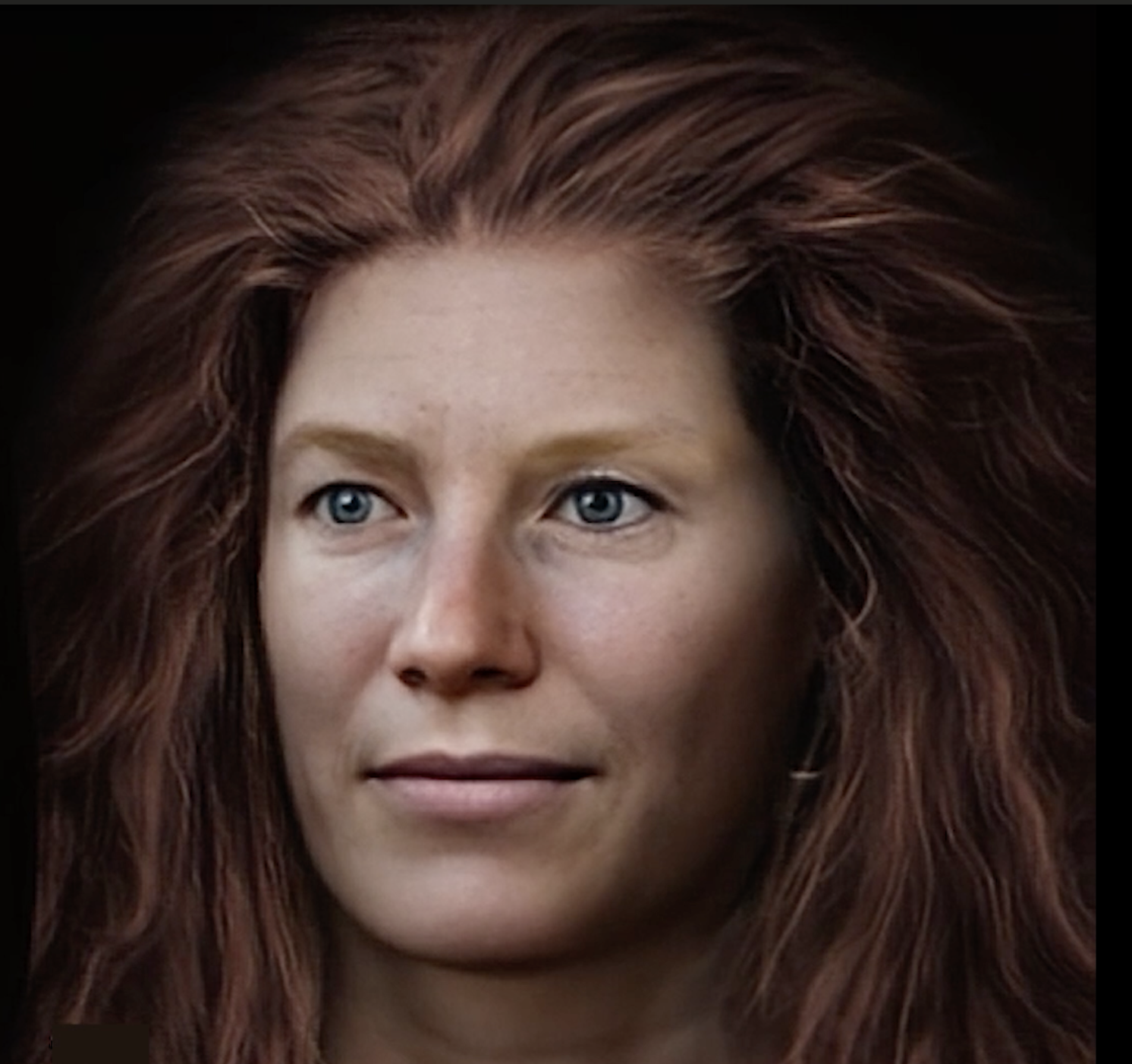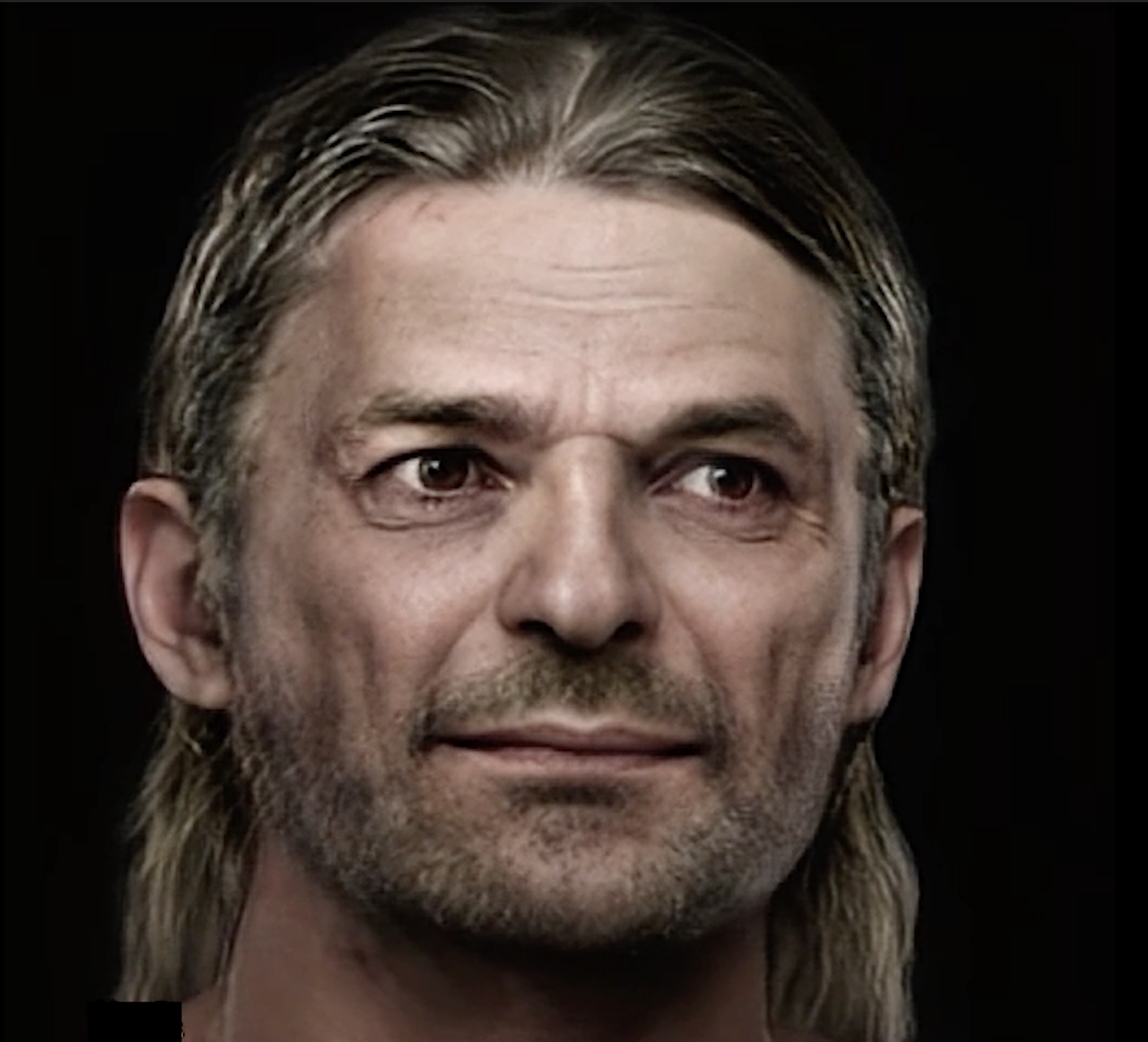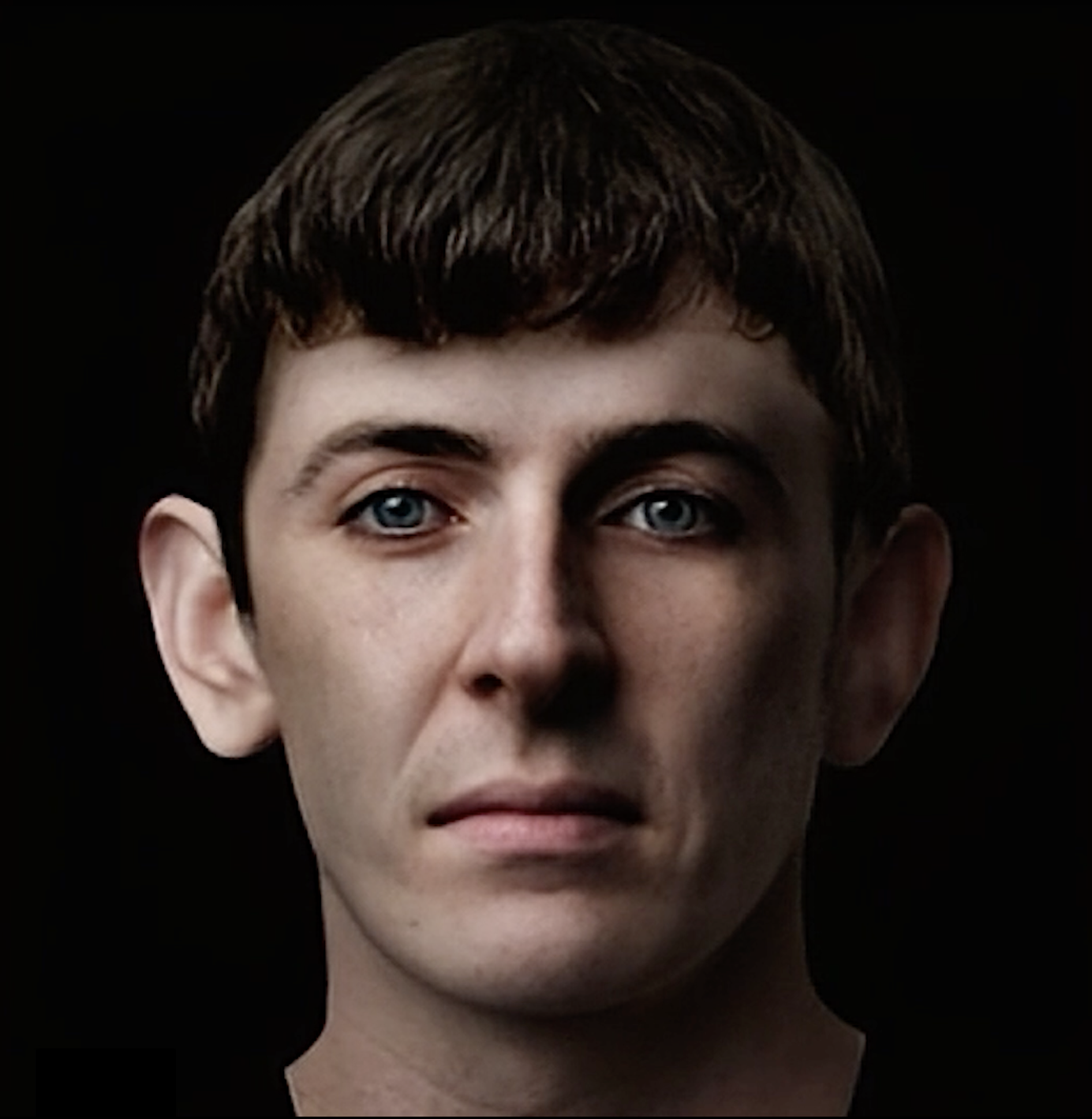Enter a search term above to search our website
Pages
News
Star Objects
As part of the new Perth Museum project, we’ve worked collaboratively with many partner organisations across the world. Some of the latest scientific research, led by Marc Oxenham and Rebecca Crozier, experts at the University of Aberdeen and by an independent, craniofacial anthropologist, Chris Rynn, has unlocked secrets of people and their life in the region over the last two millennia.
Using the latest developments in digital facial reconstruction, Chris has enabled us to glimpse something of these individuals for the first time, which we are delighted to share ahead of the new Perth Museum opening on 30th March 2024.
The first of these reconstructions we are delighted to share with you today is the facial reconstruction of Bronze Age woman from Lochlands Farm, nr. Rattray, Perthshire.
During ploughing at Lochlands Farm, Rattray, in 1962, a tractor broke into a cist burial chamber measuring roughly 2x2metres (6x6feet). It was occupied by a body in a crouched position, with the left hand across the body and the right hand lying beside the face. On the lower left-hand side of the face the facial bones appeared to have been cut cleanly away, leaving no trace of the teeth from the left-hand side. The excavator speculated that a desperate injury had been inflicted that possibly caused the individual’s death. There was no trace of any grave goods in the cist, which is unusual for the Bronze Age. As there were signs of previous disturbance it may be that any grave goods were removed following an earlier breaking-in of the grave. The skeleton was identified as female, aged around 40 years at death and with traces of osteo-arthritis in the spine. She was just over 5 foot or 1.5 metres tall.

Digital facial reconstruction based on remains of a Bronze Age female, who lived c. 2200-2000 BC, found at Lochlands farm, Perthshire. Copyright Perth Museum, Culture Perth and Kinross, working with Chris Rynn, 2024.
Re-examination of the skeleton using radiocarbon, isotopic, DNA, dental and osteological analysis shows that the skeleton is that of an adult female, who was likely in her 30s at the time of her death. She had relatively good oral health: her teeth were minimally worn, she had no dental caries (cavities), and no sign that she suffered from a dental abscess (pus accumulation from a bacterial infection that affects the teeth and/or gums). She had evidence of joint degeneration in her lower back as well as several Schmorl’s nodes, which are depressions in the top or bottom surface of a vertebral body caused by a bulge (protrusion) of the jelly-like contents of the vertebral disc into the growth cartilage of the bone, on five vertebrae (thoracic vertebrae 11 and 12 and the first through the third lumbar vertebrae). The cause of Schmorl’s nodes remains unknown, but they are likely to result from vertical forces passing through the spine (e.g., walking, jumping, traumatic injury, etc.). Schmorl’s nodes are often painless but can cause acute backpain. In addition to this, there is a superficial depression located on the right aspect of the frontal bone which is indicative of an antemortem blunt force injury. The inner table of the cranium was not affected which suggests that this injury was most likely an accident. One possible explanation is that she bumped the front of her head on something quite hard.
The second reconstruction is of a Pictish man, from Bridge of Tilt, Blair Atholl, Perthshire
This reconstruction is based on the skull of a male skeleton found in Bridge of Tilt. He was discovered during construction work in the early 1980s interred in a long-cist grave. There were no objects buried with him, but the foot end of his cist was closed off with a large round stone disc. This probably symbolised a quern stone, linking perhaps to the man’s long life of agricultural labour.

Digital facial reconstruction based on remains of Late Iron AgePictish male, who lived 400-600 AD, found at Bridge of Tilt, Blair Atholl. Copyright Perth Museum, Culture Perth and Kinross, working with Chris Rynn, 2024.
Radiocarbon, isotopic, DNA, dental and osteological analysis shows that he dates to the 5/6th century and died in his 40s. He spent his childhood on the West Coast or possibly in Ireland. As an adult he probably endured many years of hard agricultural work. He ate mainly farmed land produce and probably a high proportion of pork. He may have also eaten wildfowl and freshwater fish but not marine fish. He moved to what we now call Perthshire probably late in his life. He can be seen as embodying early connections between cultures and communities across Scotland in the middle of the first millennium AD in Scotland.
This final reconstruction we are sharing with you is of a young adult male, aged between 18-25 years, found in Perth.
He survives as a complete skeleton that came to light during the excavations of the Horsecross area in the early years of the 2000s, to facilitate the construction of a new concert hall adjacent to what is now known as Perth Art Gallery, formally Perth Museum & Art Gallery.
He was found in a shallow pit located beneath the foundations of the former Castle Gable tenement buildings. The body appears to have been crammed into the pit, which was just big enough to contain him, in a flexed position. The left hand was raised towards the lip of the pit. A lack of Christian burial and seemingly hasty concealment suggests the young man died in violent circumstances, probably murdered. Two depressions in the skull were initially understood as resulting from blows to the skull and interpreted as indications of murder. A re-examination of the skeleton suggests that the fractures are more likely to have resulted from the way the body was buried.

Digital facial reconstruction based on remains of Late Medieval male, who lived in the 13th or 14th century, found at Horsecross in Perth. Copyright Perth Museum, Culture Perth and Kinross, working with Chris Rynn, 2024
However, re-analysis at the University of Aberdeen, does confirm he was likely to have been murdered. There are two blunt force penetrating injuries to two ribs as well as multiple rib fractures that all occurred around the time of his death. The location of the injuries and the way that the ribs were fractured indicates substantial force was exerted to this individual’s chest suggesting that he was likely involved in a violent confrontation, leading to his death. Before this violent end, there is no evidence that he was suffering from a chronic illness or had any other violent encounters. He did experience several periods of physiological stress during his childhood with resulted in several episodes of growth disruption. These may have been caused by a number of things including periods of illness and/or malnourishment.
Found with the skeleton were two silver coins, fused together: a penny of Edward I or II of England (dating between 1279-1322) and a penny of David II of Scotland (dating to 1367-71), suggesting burial in the late 14th century. A radiocarbon date suggests he may have been buried 50-100 years earlier. The coins had probably been stitched into a seam of the dead man’s clothing.
Welcoming the results of this strand of interpretation for the new Museum, curator Mark Hall said: “It’s always an immense privilege to work with the physical remains of our past and collaborate with other colleagues to recover some of the stories those remains can tell us about past lives and ways of living. I hope visitors will be excited to engage with the digital facial reconstructions, of which there will be more to discover in the new Museum. I have come to think of these faces as avatars from the past, here to guide us through some of its realities”.
With thanks to Chris Rynn and Hayley Fisher; and, on behalf of Aberdeen University: Marc Oxenham, Rebecca Crozier, Jenna Dittmar and Elizabeth Ashcroft.